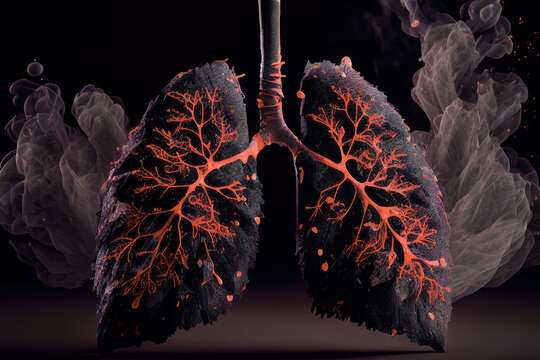Title: Understanding Lung Cancer: Signs, Symptoms, Causes, Risk Factors, Diagnosis, Prevention, Diet, Lifestyle, and Homoeopathic Medicine
Introduction:
Lung cancer is a serious condition that affects the lungs, leading to abnormal cell growth. It is crucial to recognize the signs, symptoms, causes, risk factors, methods of diagnosis, prevention strategies, and the potential role of homoeopathic medicine in managing lung cancer. In this blog post, we will explore key aspects of lung cancer and its holistic approach to treatment.
Signs and Symptoms of Lung Cancer:
1. Persistent cough: A chronic cough that worsens or does not go away.
2. Chest pain: Unexplained chest pain or discomfort.
3. Shortness of breath: Difficulty breathing or breathlessness.
4. Coughing up blood: Blood-stained mucus or phlegm.
5. Fatigue: Feeling tired or weak without a known cause.
6. Unintentional weight loss: Losing weight without changes in diet or exercise.
Common Causes of Lung Cancer:
1. Smoking: The leading cause of lung cancer, responsible for the majority of cases.
2. Secondhand smoke: Inhaling smoke from others' cigarettes or tobacco products.
3. Environmental exposures: Exposure to asbestos, radon gas, air pollution, or certain chemicals.
4. Family history: Genetic predisposition to lung cancer.
5. Previous lung disease: Individuals with a history of lung diseases like chronic obstructive pulmonary disease (COPD) have a higher risk.
Risk Factors for Lung Cancer:
1. Smoking: Active and passive smoking significantly increase the risk of developing lung cancer.
2. Exposure to carcinogens: Occupational exposure to asbestos, radon, arsenic, uranium, and certain chemicals.
3. Family history: Having a close relative with lung cancer.
4. Age: The risk of lung cancer increases with age.
5. Personal medical history: Previous lung diseases or radiation therapy to the chest.
Diagnosis of Lung Cancer:
1. Imaging tests: Chest X-ray, computed tomography (CT) scan, or magnetic resonance imaging (MRI) to visualize the lungs and detect abnormalities.
2. Biopsy: Removal of a tissue sample for examination to confirm the presence of cancer cells.
3. Molecular testing: Analyzing the tumor sample to identify specific gene mutations or biomarkers that may guide treatment options.
Prevention Strategies, Diet, and Lifestyle Considerations:
1. Smoking cessation: Quitting smoking is the most effective way to prevent lung cancer.
2. Avoid secondhand smoke: Minimize exposure to tobacco smoke.
3. Reduce environmental exposures: Take precautions in workplaces with known carcinogens and test homes for radon gas.
4. Healthy diet: Consume a balanced diet rich in fruits, vegetables, whole grains, and lean proteins.
5. Regular exercise: Engage in regular physical activity to maintain overall health.
6. Protect against occupational hazards: Follow safety guidelines and wear protective equipment in high-risk occupations.
Homoeopathic Treatment for Lung Cancer:
Homoeopathy can provide a supportive role in managing symptoms, improving overall well-being, and addressing the individual's constitution. Homoeopathic remedies are selected based on the specific symptoms and characteristics of each patient. It is essential to consult a qualified homoeopathic practitioner for an accurate diagnosis and personalized treatment plan.
Conclusion:
Lung cancer is a serious condition with significant health implications. By understanding the signs, symptoms, causes, risk factors, methods of diagnosis, prevention strategies, and considering homoeopathic medicine as a complementary approach, individuals can take steps towards prevention, early detection, and holistic management of lung cancer. Always consult healthcare professionals for an accurate diagnosis and to create a comprehensive treatment plan tailored to your specific needs.


Leave a Message